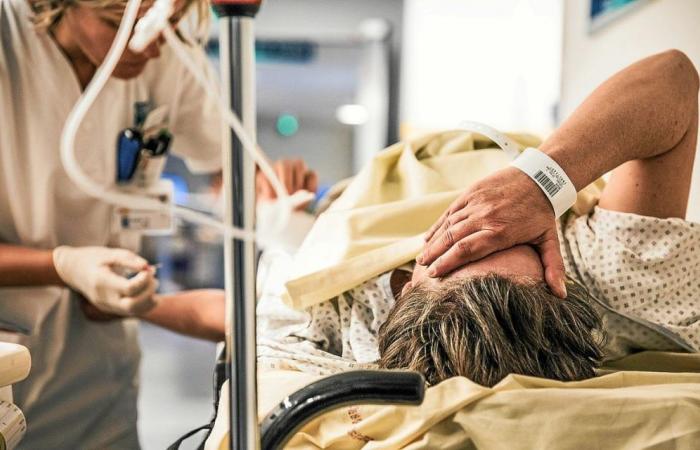Saturation is close in emergency rooms on the outskirts of Rennes. Tuesday June 18, 2024, the Brittany Regional Health Agency sounded the alarm, recalling the very high activity experienced by the services concerned in recent weeks.
“Call 15 before going to the emergency room”, advises the ARS which, given the context, urges the population to “call their GP as a priority during the day or seek a medical appointment via teleconsultation”.
Increase in respiratory infections
At CHU Pontchaillou, where there is the largest emergency medicine service in the region, the situation is extremely tense. “We have clearly seen an increase in visits for several weeks,” indicates Guillaume Herfray, CFDT Santé Sociaux union delegate. “We receive around 1,600 calls per day to the SAMU,” adds an emergency doctor. “It’s sometimes very complicated. There are daily hospital meetings in tension with our management to try to adjust the situation.” Contacted about this situation, the Rennes University Hospital did not wish to answer our questions.
Several factors explain this recent deterioration of the situation. “There is an increase in cases of respiratory infections with the return of covid and the whooping cough epidemic,” confides an emergency doctor. “There are also a lot of patients without treating doctors who arrive more easily in the emergency room.” A sad reality. In a major survey published in September 2022, Le Mensuel de Rennes revealed that 42,000 inhabitants of the Rennes metropolis were without treating doctors.
At Rennes University Hospital, the recent grouping of cardiological emergencies with the adult emergency department has also weighed on the flow of passages. “Recovering the reception of cardio emergencies when the caregivers already no longer know where to give head, it’s a bit of the last straw,” breathes Anne-Cécile Thébault of the UNSA Santé union.
The situation is even tense in the periphery. Faced with significant human resources problems, the emergency services of neighboring hospitals find themselves obliged to regulate their activity. At the beginning of June, the Cesson private hospital was forced to close its emergency rooms at night for a week due to severe staffing pressure. A situation that is also regularly experienced by the hospitals of Saint-Grégoire, Vitré and Fougères.
Transfer to the CHU
“We suffer from obvious medical understaffing,” laments Yann Béchu, director of the Cesson-Sévigné private hospital. “We are facing a systemic shortage of emergency doctors because the profession is no longer attractive. So, when we lack available people or places in our establishments, we prefer to say stop and put in place regulations so as not to endanger patients.”
A situation which leads to an automatic transfer of activity to the Rennes University Hospital, which is already in heavy demand and which has no other choice but to “pay for the others”. “We are not giving peripheral hospitals the means to deal with emergencies and avoid transfer to Rennes,” indicates Guillaume Herfray. “We cannot regulate our activity, we have to manage to make room for everyone, but at what cost. At the moment, we are pulling a lot on the strings. Organisms get tired and fatigue can lead to mistakes. We must hope that caregivers will be able to take a breather this summer without having too much of an impact on emergency activity.”






